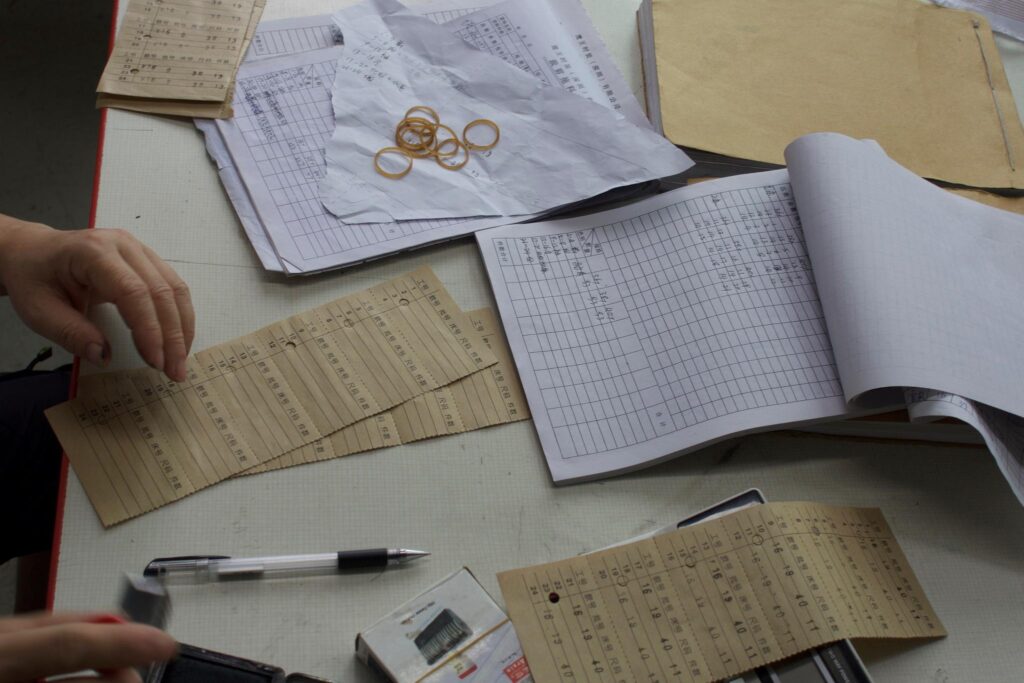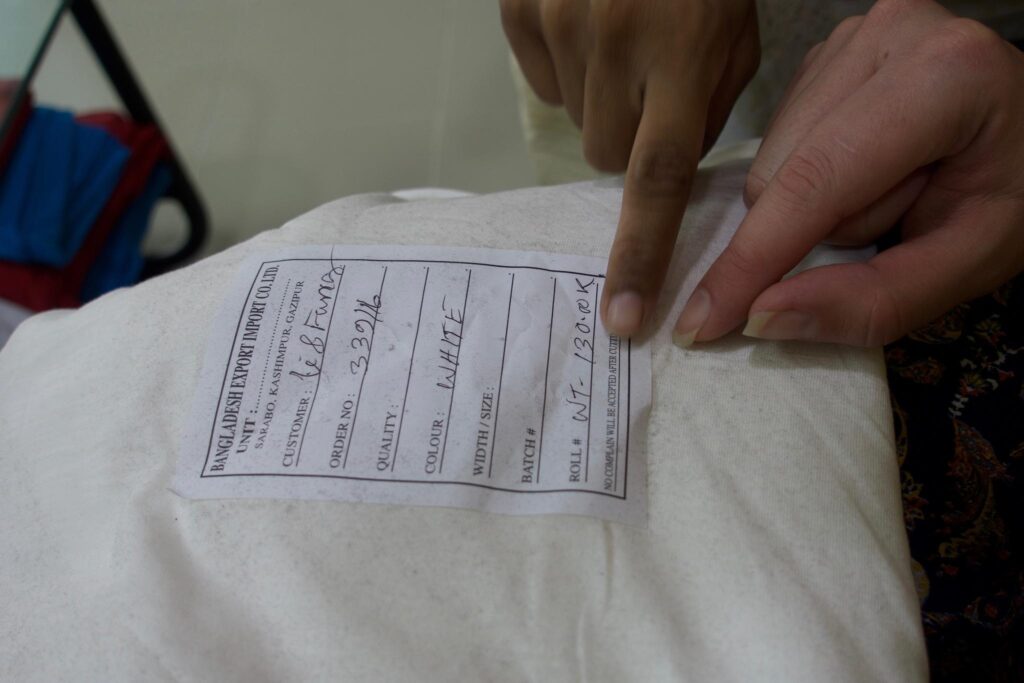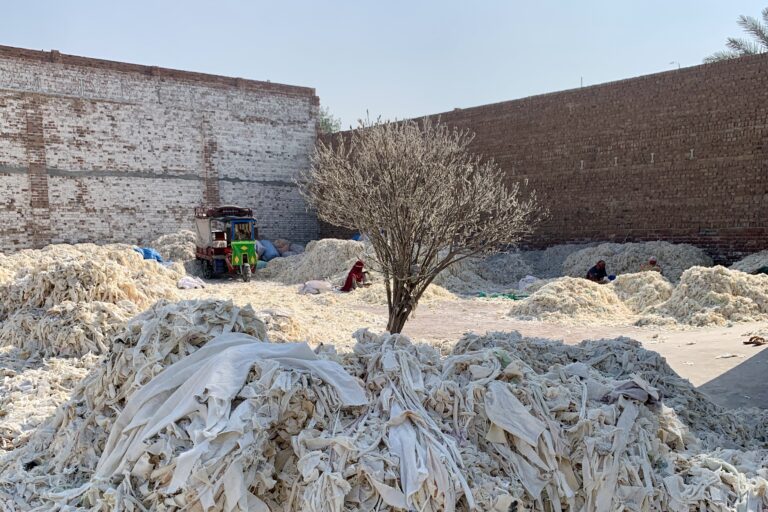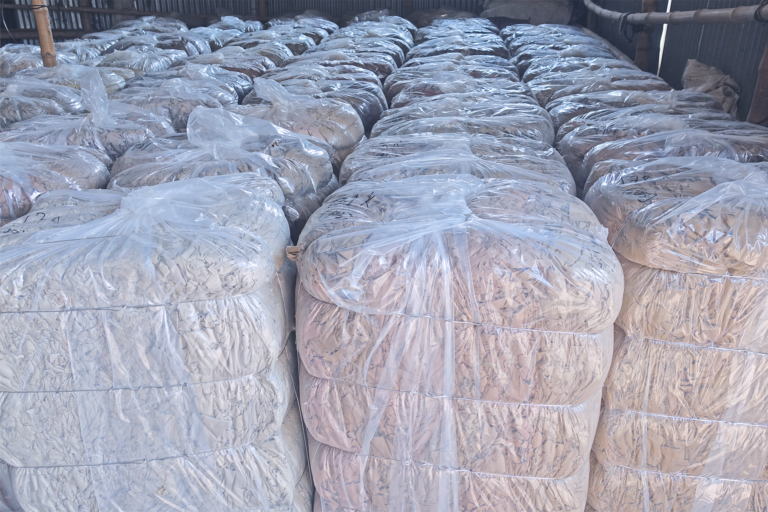
An article by Alden Wicker on Vox discussed the misinformation problem of fashion industry and how it’s bad for the environment. The data we have is wrong, missing or misleading, and it seems we can’t make it better. At Reverse Resources we’ve seen close-up how lack of good data leads to a series of problems. However, the solution may be different from what you’d intuitively think in the first place.
The article by Alden gives a number of examples how much of the public data about fashion industry have no strong research evidence behind them. If we don’t even know the actual total number of garments produced yearly how can we then estimate CO2 emissions from fashion. Even if cited by large well-known organisations like McKinsey or Ellen MacArthur Foundation the “facts” are arguable. And if we can’t measure the size of the problem, we can’t measure progress or total impact of any solutions.
We decided to put down a few thoughts on how to address this problem differently and few possible solutions that we think might help:
Problem 1: There is no real demand (painpoint) to really want global statistics of fashion industry and its impacts
When we started our journey with Reverse Resources, first thing we needed was to give context of the size of problem and impact of our solution. It took us more than 2 years to get those number together. With a research that felt more like the work of a secret agent to get the evidence we needed. We demonstrated that >47% of textile fibre gets wasted in production already before reaching the consumer.
But nobody really cared for the statistics itself. It became useful only once that data was turned into a business case to solve someone’s pain-point. In our case, data about volumes and types of textile waste are super useful for textile waste recyclers. It’s needed for daily sourcing of high-quality feedstock but even more so if they want to scale up their business in a new location. So through setting up a wide-scale marketplace for trading the waste we can also generate publicly available market statistics next to the waste trading business and thereby improve the quality of the data over the time also for the wider audience.
Solution: If we need better data, we should first have a good use for that data on a regular basis. Like for example measurement of GDP which is driven from public interest but generates demand for collecting financial statistics. Why not measure the progress toward sustainable fashion globally in tonnes of material flowing around in comparison to GDP re-generated from same resources. It would instantly give us a need to generate a completely new data set and provide market insight that would support the industry’s shift to circular economy.
Problem 2: the hyper-competition and lack of trust in fashion industry keeps the data locked up in drawers (or under the mattresses)
The problem actually, as it turned out for Reverse Resources case, is not that the data does not exist. It’s all there – total volumes of garment production, use of fibre compositions, environmental impact calculations, anything you could ask for. It’s written up in pen and paper, excel sheets and word documents, and sent around in emails. But what is missing is the system to collect and use the data efficiently. If we say that data is the new gold, then it’s similar to keeping your money under your mattress and not let that rotate in the economy to let it create more value.
Due to hyper-competition, for decades the fashion industry never saw any need for collaboration. It is wonderful to see how platforms like Fashion For Good or Intellecap now building up synergy to face the common challenges in fashion. But there is still a long-long way to go. On a daily basis we meet garment manufacturers who are being super careful with every word and piece of information they share. They’ve set up servers and computer parts internally to their industry parks without no internet connection to make sure the data does not move out from there. And they don’t want to set up digital data collection for sensitive data, because “if you can print it, it can leak”.
Solution: It’s not blockchain that helps, as many would think. Blockchain could help if we had trouble with verifying the accuracy of the data or worrying that someone would tamper with it. In this case the problem is that we don’t have any reliable data at all to be verified in the first place. So instead of blockchain, what fashion industry really needs is commonly agreed principles of data governance and 3rd party service providers who offer such governance from neutral standpoint. Here’s a good short speech for inspiration about the digital public governance of Estonia and the key principles behind it which may be highly useful for the fashion industry to take an example from:
1) guaranteed privacy and confidentiality of data
2) “once only” data entry and storage
3) full ownership and control over your own data while enabling (partial) access to those who need it
Innovation can only happen if several different mindsets and world views meet and mingle. Digitalisation of the fashion industry has been happening mainly on the consumer end of the value chains. Let’s work together to introduce digital mindset and trustworthy data management also to the back-end of the industry so that the whole world could win from it.
We decided to put down a few thoughts on how to address this problem differently and few possible solutions that we think might help:
Problem 1: There is no real demand (painpoint) to really want global statistics of fashion industry and its impacts
When we started our journey with Reverse Resources, first thing we needed was to give context of the size of problem and impact of our solution. It took us more than 2 years to get those number together. With a research that felt more like the work of a secret agent to get the evidence we needed. We demonstrated that >47% of textile fibre gets wasted in production already before reaching the consumer.
But nobody really cared for the statistics itself. It became useful only once that data was turned into a business case to solve someone’s pain-point. In our case, data about volumes and types of textile waste are super useful for textile waste recyclers. It’s needed for daily sourcing of high-quality feedstock but even more so if they want to scale up their business in a new location. So through setting up a wide-scale marketplace for trading the waste we can also generate publicly available market statistics next to the waste trading business and thereby improve the quality of the data over the time also for the wider audience.
Solution: If we need better data, we should first have a good use for that data on a regular basis. Like for example measurement of GDP which is driven from public interest but generates demand for collecting financial statistics. Why not measure the progress toward sustainable fashion globally in tonnes of material flowing around in comparison to GDP re-generated from same resources. It would instantly give us a need to generate a completely new data set and provide market insight that would support the industry’s shift to circular economy.
Problem 2: the hyper-competition and lack of trust in fashion industry keeps the data locked up in drawers (or under the mattresses)
The problem actually, as it turned out for Reverse Resources case, is not that the data does not exist. It’s all there – total volumes of garment production, use of fibre compositions, environmental impact calculations, anything you could ask for. It’s written up in pen and paper, excel sheets and word documents, and sent around in emails. But what is missing is the system to collect and use the data efficiently. If we say that data is the new gold, then it’s similar to keeping your money under your mattress and not let that rotate in the economy to let it create more value.
Due to hyper-competition, for decades the fashion industry never saw any need for collaboration. It is wonderful to see how platforms like Fashion For Good or Intellecap now building up synergy to face the common challenges in fashion. But there is still a long-long way to go. On a daily basis we meet garment manufacturers who are being super careful with every word and piece of information they share. They’ve set up servers and computer parts internally to their industry parks without no internet connection to make sure the data does not move out from there. And they don’t want to set up digital data collection for sensitive data, because “if you can print it, it can leak”.
Solution: It’s not blockchain that helps, as many would think. Blockchain could help if we had trouble with verifying the accuracy of the data or worrying that someone would tamper with it. In this case the problem is that we don’t have any reliable data at all to be verified in the first place. So instead of blockchain, what fashion industry really needs is commonly agreed principles of data governance and 3rd party service providers who offer such governance from neutral standpoint. Here’s a good short speech for inspiration about the digital public governance of Estonia and the key principles behind it which may be highly useful for the fashion industry to take an example from:
1) guaranteed privacy and confidentiality of data
2) “once only” data entry and storage
3) full ownership and control over your own data while enabling (partial) access to those who need it
Innovation can only happen if several different mindsets and world views meet and mingle. Digitalisation of the fashion industry has been happening mainly on the consumer end of the value chains. Let’s work together to introduce digital mindset and trustworthy data management also to the back-end of the industry so that the whole world could win from it.




